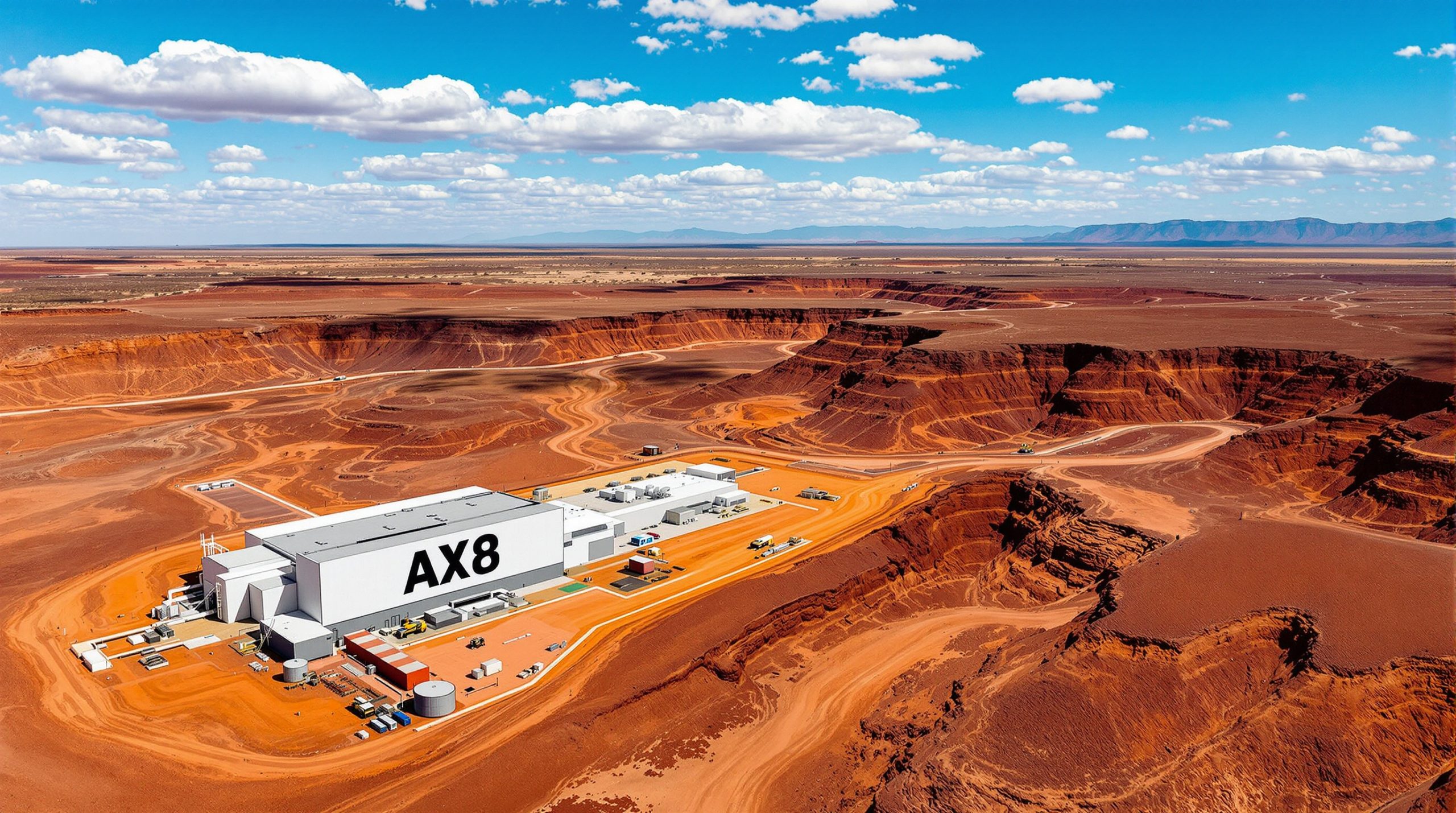Significant Breakthrough in Metallurgical Testing
Metals Australia (ASX: MLS) has achieved a major milestone at its Manindi Titanium-Vanadium-Iron (Ti-V-Fe) project in Western Australia, successfully producing two commercially attractive products from metallurgical test work. The company also identified four additional target zones, significantly expanding the project's potential.
The test work, conducted on drill samples from the high-grade discovery by Metals Australia, yielded an impressive Iron-Vanadium Pentoxide product grading 66.0% Fe and 1.19% V2O5 and a Titanium Oxide-Iron product grading 43.8% TiO2 and 32.0% Fe. Both products were produced with low impurity levels, and over 65% of ore sample mass was recovered into the combined products.
"We are delighted with the results achieved during screening level metallurgical test work for our Manindi high grade Titanium-Vanadium and Iron discovery in the Murchison region of WA. To obtain a 66% Fe product with around 1.2% of V2O5 and with very low levels of impurity was a great starting point – utilising simple crush, grind and LIMS separation," said Paul Ferguson, CEO of Metals Australia.
Understanding the Discovery
The Manindi Ti-V-Fe discovery is situated on a magnetic trend approximately 2km long and up to 200m wide, adjacent to the company's existing Zinc-Copper-Silver Mineral Resource in Western Australia's Murchison region. The mineralised zone was identified approximately 50m below surface and remains open at depth.
Previous drilling had produced broad vanadium-titanium-magnetite intersections, including:
- 70m @ 0.30% V2O5, 28% Fe, 11.5% TiO2 from 48m (including 20m @ 0.44% V2O5, 34.8% Fe, 14.3% TiO2)
- 129m @ 0.23% V2O5, 23.3% Fe and 11.5% TiO2 from 53m
The Technical Process Behind the Products
The metallurgical test work utilised a 117kg composite sample from drill hole 22MND004, which intersected 58.18m @ 0.36% V2O5, 23.4% TiO2 and 28.8% Fe from 60.55m downhole. This sample was processed through standard crushing, grinding and magnetic separation stages, similar to techniques used in gold resource development.
| Product | Process | Grade | Mass Recovery (Yield) |
|---|---|---|---|
| Iron-Vanadium | LIMS (Low Intensity Magnetic Separation) | 66.0% Fe, 1.19% V2O5 | 27.1% |
| Titanium-Iron | WHGMS (Wet High Gradient Magnetic Separation) | 43.8% TiO2, 32.0% Fe | 38.2% |
The Iron-Vanadium product is particularly noteworthy for its extremely low impurity levels at 1.8% SiO2, 0.42% AL2O3, 0.002% P and 0.25% Cr, making it highly marketable.
What is LIMS and WHGMS?
Low Intensity Magnetic Separation (LIMS) is a process that separates ferromagnetic minerals (like magnetite) from less magnetic or non-magnetic materials. The process uses relatively weak magnetic fields to attract the ferromagnetic particles, making it energy-efficient and ideal for recovering iron-rich minerals.
Wet High Gradient Magnetic Separation (WHGMS) employs stronger magnetic fields to capture weakly magnetic minerals (like ilmenite) that don't respond to LIMS. This technology is particularly effective for finer particles and can achieve higher separation efficiency when dealing with minerals that have similar magnetic properties.
Expanding the Project's Potential
Beyond the successful metallurgical results, Metals Australia has identified four additional target zones within the approved mining leases through further reviews of geophysical data. All new target zones are close to the original discovery, substantially increasing the project's scale potential.
The company is now preparing a Program of Work to investigate these newly identified zones and is planning drilling to define a Mineral Resource within the original discovery zone. Furthermore, this approach to environmental planning is becoming increasingly important for mining projects.
The Investment Case for Metals Australia
Metals Australia possesses a diversified portfolio of critical minerals projects across Western Australia, Quebec (Canada), and the Northern Territory, positioning it well to capitalise on growing demand for battery and industrial metals.
The Manindi project offers multiple value streams:
- The newly discovered high-grade Ti-V-Fe deposit with proven ability to produce commercial products
- An established Zinc-Copper-Silver Mineral Resource of 1.08 Mt at 6.52% Zinc, 0.26% Copper, and 3.19 g/t Silver
- Multiple new exploration targets with similar magnetic signatures to the initial discovery
Beyond Manindi, the company is advancing its flagship Lac Carheil high-grade flake-graphite project in Quebec, where it recently completed a major drilling program adding 9,482m of diamond core drilling to support a resource update. The existing Mineral Resource stands at 13.3Mt @ 11.5% graphitic carbon.
Why Investors Should Monitor Metals Australia
Metals Australia represents a compelling opportunity for investors seeking exposure to critical minerals essential for the energy transition and industrial applications. The company has demonstrated its ability to make significant discoveries and advance them through meaningful development steps.
The high-grade discovery by Metals Australia at Manindi particularly stands out for:
- The high-grade nature of both products
- The simple, scalable processing requirements
- The low impurity levels in the Iron-Vanadium product
- The identification of multiple additional targets
- The proximity to existing infrastructure in an established mining region
With multiple avenues for growth across its portfolio and active development programs underway, Metals Australia is well-positioned to deliver value to shareholders as it advances its projects toward production. In addition, the company may benefit from the growing interest in rare earth projects that's currently sweeping through the mining sector.
Looking for the Next Major Resource Discovery?
Discover the market-moving potential of significant mineral finds with Discovery Alert's proprietary Discovery IQ model, which instantly identifies and analyses ASX announcements for actionable investment opportunities. Explore historic examples of exceptional returns from major discoveries by visiting Discovery Alert's dedicated discoveries page.




